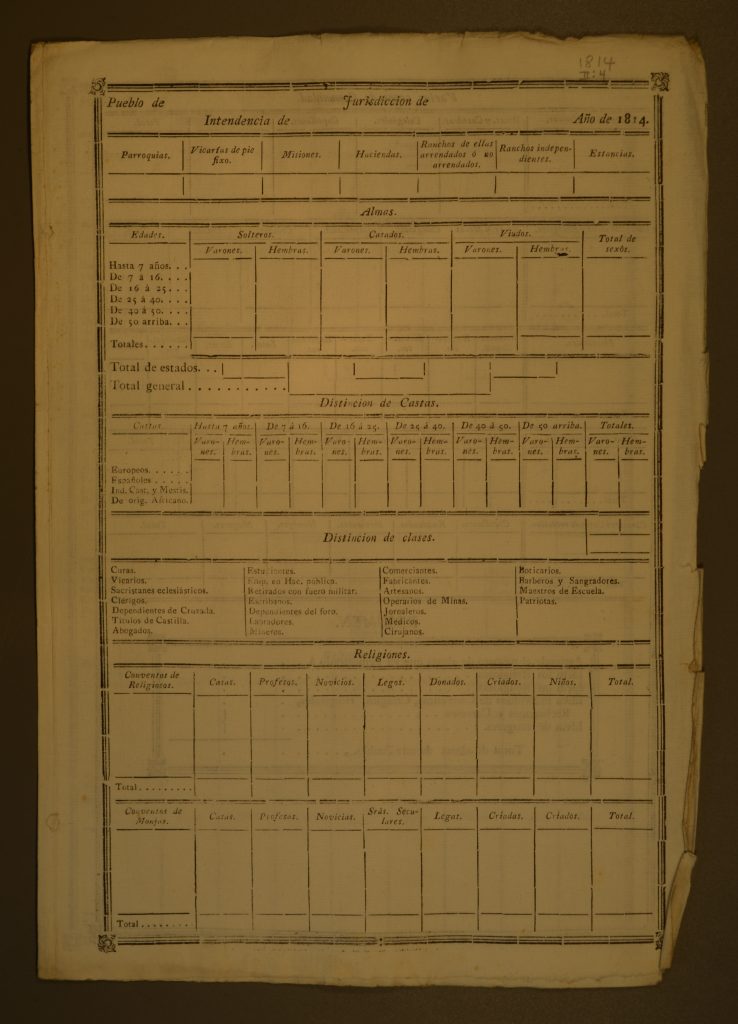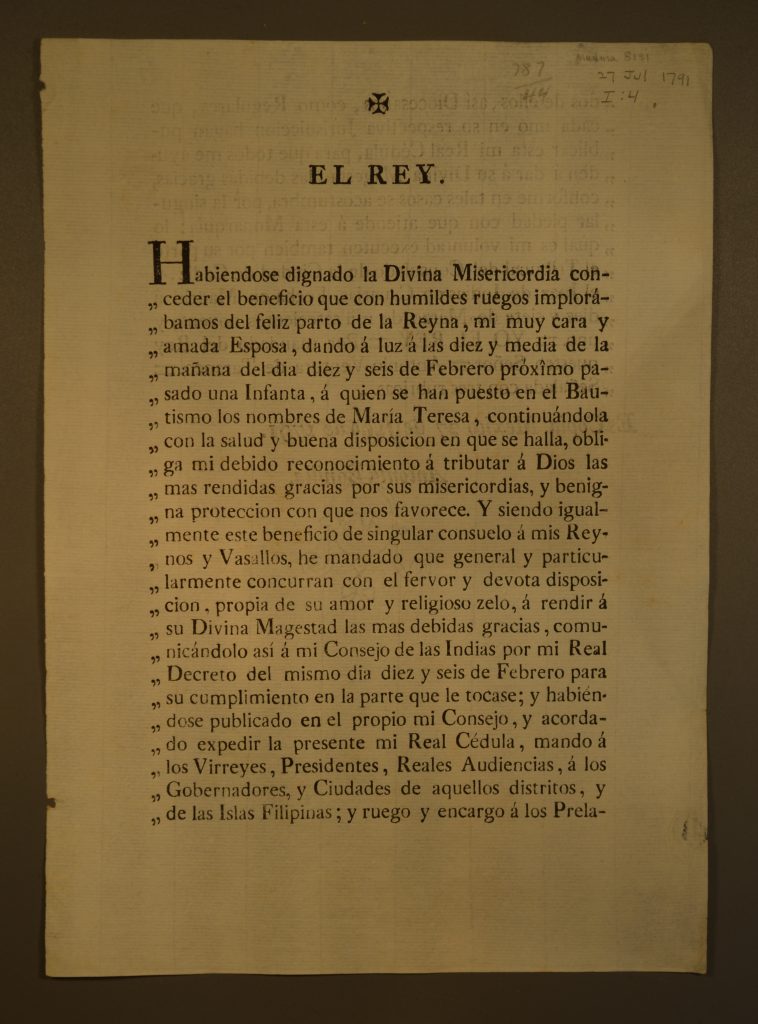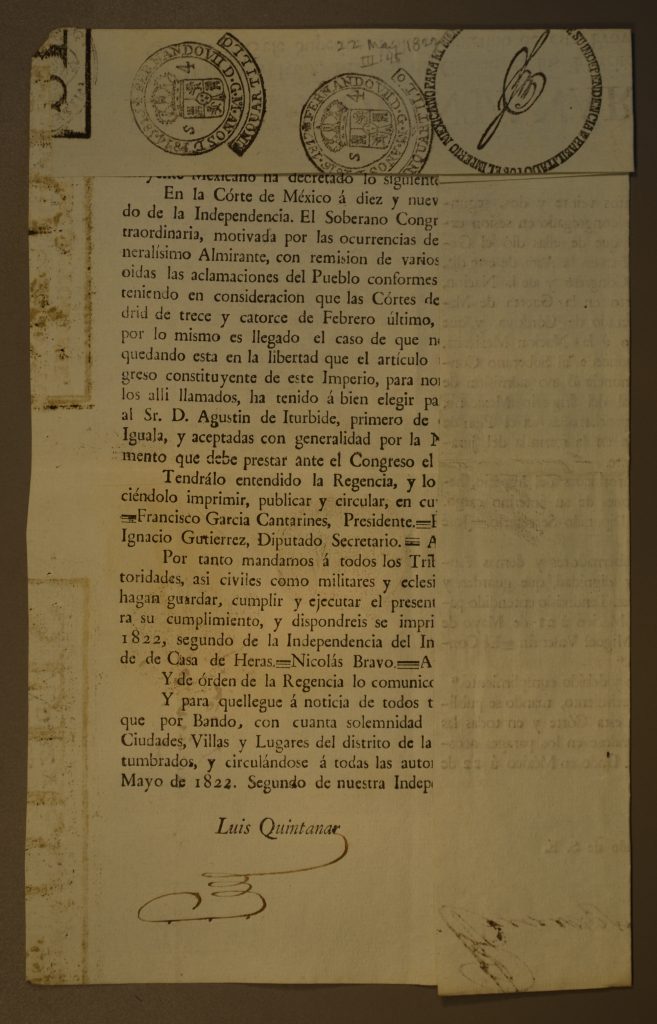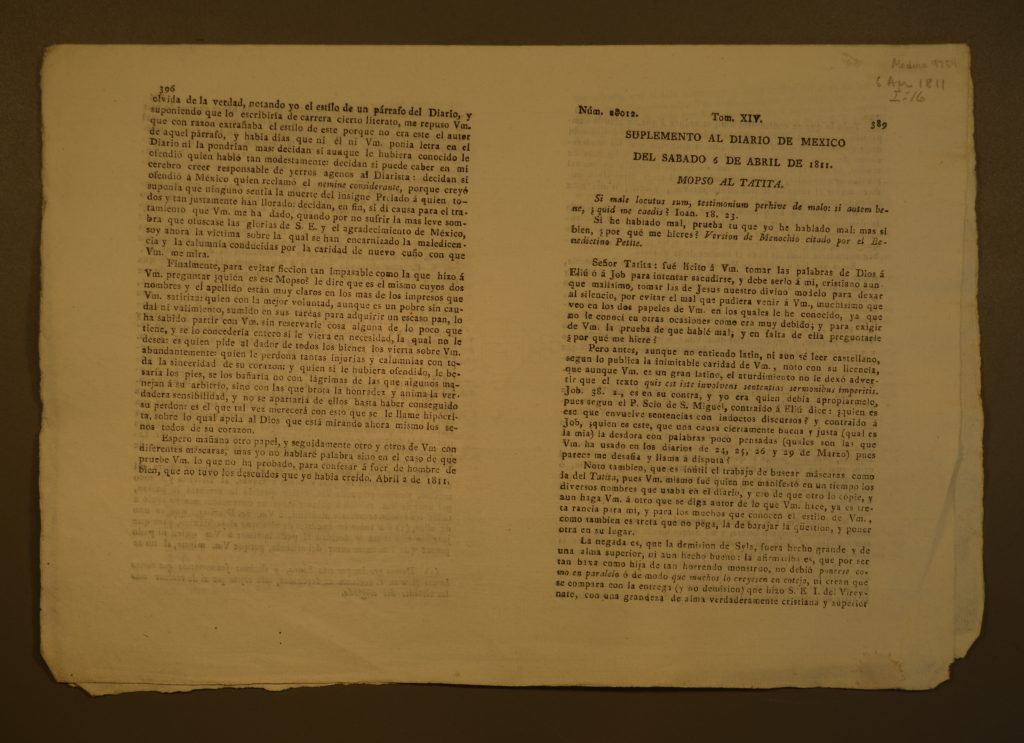Mexico: Race and Revolution in the Borderlands will be offered with live English-to-Spanish translation for Spanish-speaking visitors.
The border between Mexico and the United States has been at the heart of trade, politics, art, and spirituality for centuries. A new Behind the Bookcase: Hands-on Tour at the Rosenbach titled Mexico: Race and Revolution in the Borderlands debuts Sunday, September 29. Unveiled in celebration of National Hispanic Heritage Month, the tour will offer visitors a glimpse into several centuries of Mexican history, from the territory’s days as a Spanish colony to its development as an independent nation. Visitors will meet Indigenous peoples, mestizos (people of mixed Indigenous and European ancestry), Europeans, and African peoples, both free and enslaved, in the documents they study on the tour. The Spanish empire, and later, Mexico relied on ink, paper, and the flow of information to rule over thousands of miles of territory and a complex web of races and ethnicities. Tour participants will have the opportunity to see and even touch fascinating artifacts of this system of information exchange. Photos of some of the documents to be featured on the tour are included below.
This Behind the Bookcase: Hands-on Tour will be presented bilingually, with live English-to-Spanish translation available for anyone who desires it. Tickets are $25 for the general public and $12.50 for Rosenbach members. Tour slots are very limited. Registration is available here. Guests who wish to request the translation service will find instructions for how to do so on the website. More tour dates will be scheduled in the coming weeks. Check the Rosenbach programs calendar for updates.
The tour will feature only a small percentage of The Rosenbach’s historical books and documents related to Mexico, so visitors are encouraged to return after the tour to continue exploring relevant collections at the institution. Information about some of the materials to be studied on the tour, along with other documents of interest, can be found in a new Rosenbach Collections Guide available here.




